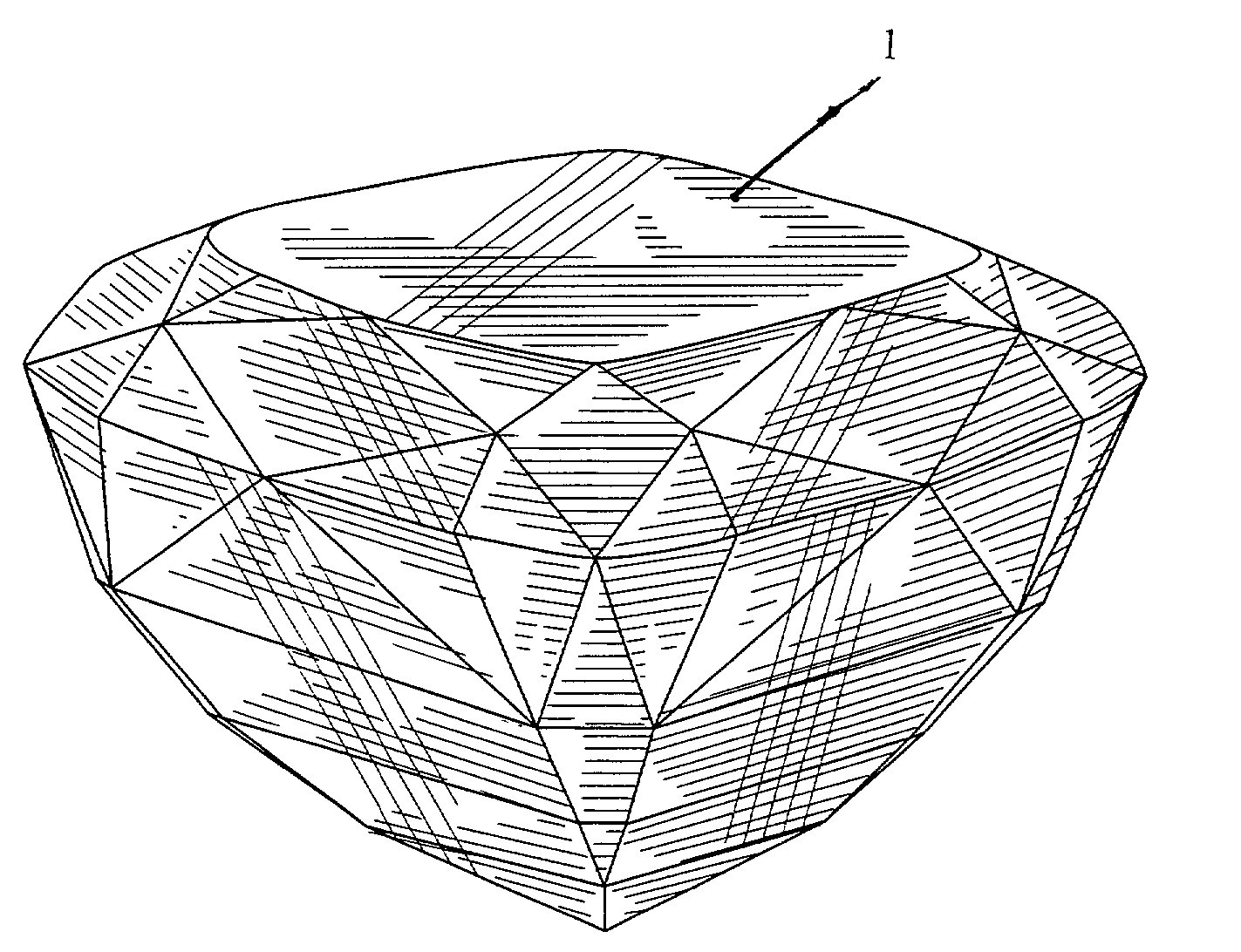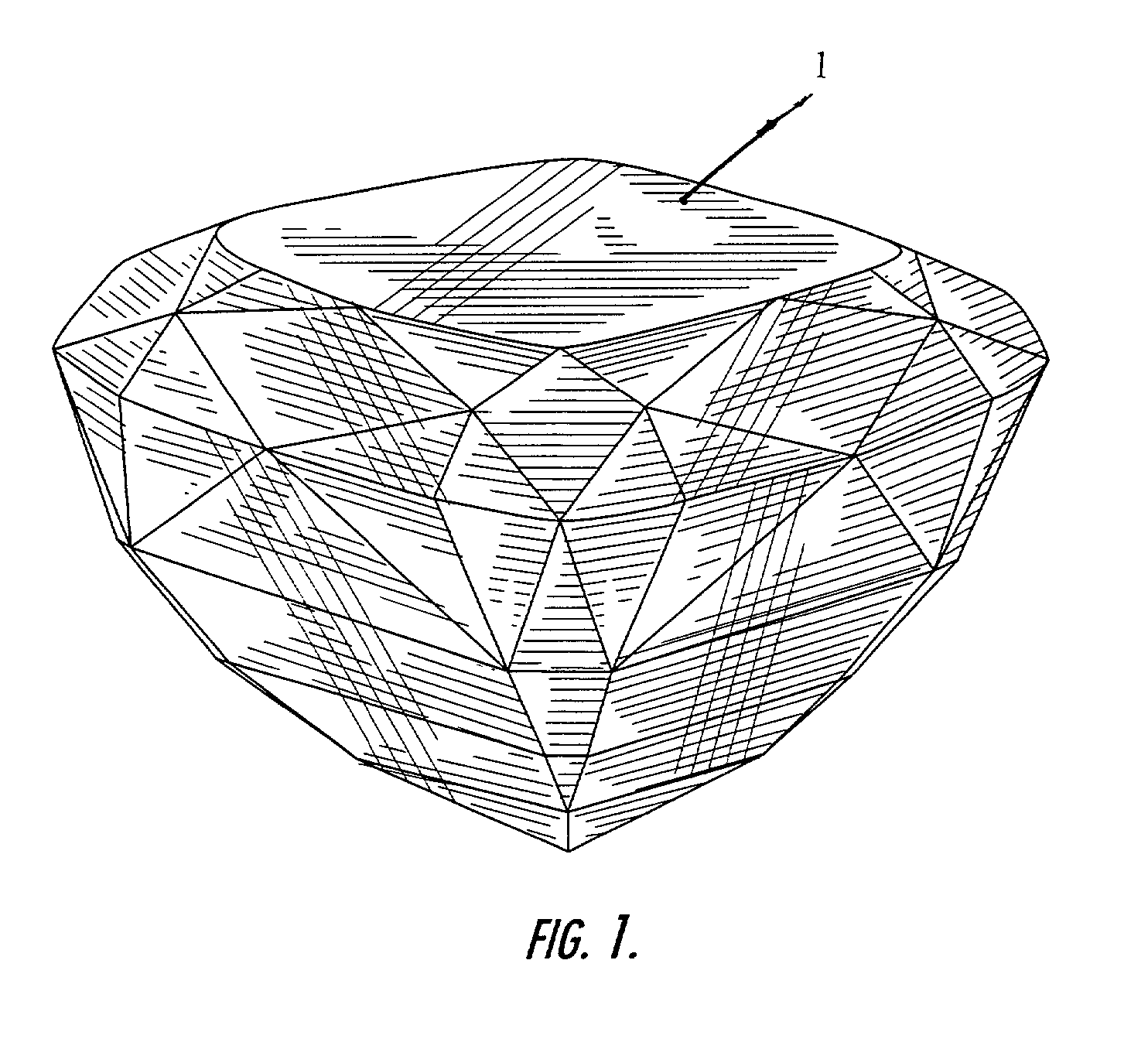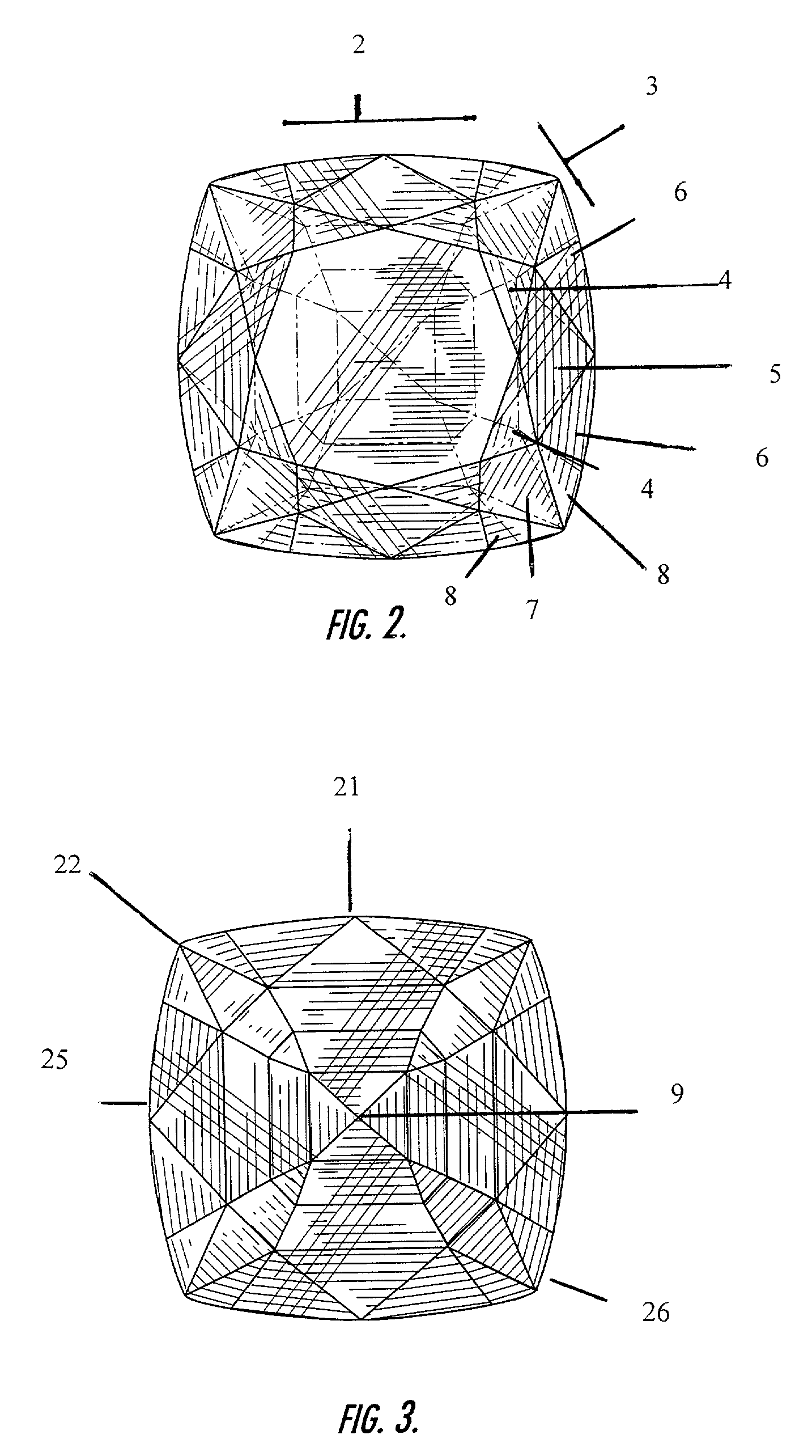Mixed cut gemstone
a technology of mixed cut gemstones and gemstones, which is applied in the field of unique cut design of diamonds, can solve the problems of unobstructed viewing of the pavilion facets of diamonds, and achieve the effects of enabling emphasis and control of optical properties, sufficient surface area, and unique and attractiveness
- Summary
- Abstract
- Description
- Claims
- Application Information
AI Technical Summary
Benefits of technology
Problems solved by technology
Method used
Image
Examples
Embodiment Construction
[0034]In describing a preferred embodiment of the invention illustrated in the drawings, specific terminology will be employed for clarification. However, the invention is not intended to be limited to the specific terms selected, and each specific term includes all technical equivalents, which operate in a similar manner to accomplish a similar purpose.
[0035]In one embodiment of this invention, a mixed-cut gemstone is provided comprising a brilliant cut crown and a modified step cut pavilion. This mixed cut gemstone comprises a girdle, a brilliant cut crown above said girdle, a modified step cut pavilion below said girdle and a culet. The modified step cut pavilion comprises at least two steps, a first step 14 descending from the girdle 10 to the first step facet junction 11 and a second step 15 descending from the first step facet junction to the culet 18. In the preferred embodiment of this invention four pavilion steps are provided.
[0036]Ranges for the angles formed by each crow...
PUM
 Login to View More
Login to View More Abstract
Description
Claims
Application Information
 Login to View More
Login to View More - R&D
- Intellectual Property
- Life Sciences
- Materials
- Tech Scout
- Unparalleled Data Quality
- Higher Quality Content
- 60% Fewer Hallucinations
Browse by: Latest US Patents, China's latest patents, Technical Efficacy Thesaurus, Application Domain, Technology Topic, Popular Technical Reports.
© 2025 PatSnap. All rights reserved.Legal|Privacy policy|Modern Slavery Act Transparency Statement|Sitemap|About US| Contact US: help@patsnap.com



